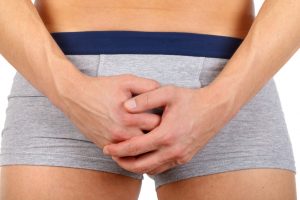A penis is a male’s sexual organ that defines his gender. We are usually concerned about the size of our penis especially when we want to engage in sexual intercourse.
To have sexual intercourse, we need a hard penis. It enables us to penetrate our partners. A penis goes through a process for it to be erect. A slight change in this process changes everything.
When not able to achieve an erection, you are said to be suffering from erectile dysfunction. The following is the process it goes through until it reaches a full erection:
The Erection Process
Sexual arousal leads to penile erection. The male penis is made up of two chambers which are responsible for the erection. They are called corpora cavernosa and corpus spongiosum chambers. They are made up of tissue. These chambers house venous sinuses that hold blood. They also contain a network of blood vessels that contribute to the erection process.
When the penis is flaccid, the sinuses have little blood in them. When you get sexually excited, the blood vessels in the sinuses relax to allow more blood to flow in until the penis gets hard enough. Once the penis is hard enough, the pressure is maintained by tunica albuginea which allows an erection to hold for some time before it goes away. The brain also signals the arteries to lock and stop blood from entering the organ.
This control protects you from bursting of the blood vessels due to excess blood. The bursting of the blood vessels in your penis can be painful and may lead to internal infection when not acted on promptly. At this point, testes release testosterone hormone. The hormone plays a vital role in determining how long an erection will last.
Types of Erections
There are various types of erections. An erection depends on how it is stimulated. The following are the two types of erections:
A. Psychogenic Erection

It is a form of erection that originates from the mind. You get it after you see someone you admire sexually or something that is sexually arousing. Basically, this erection starts from what you see in your mind.
These visual factors trigger the neural system, which connects either to thoracolumbar sympathetic nuclei or the sacral parasympathetic part of the spinal cord.
The connection switches on the erection process. You will find your penis bulging in public when you are not careful of what you think about.
B. Reflexogenic Erection
It is an erection that is brought about by physical contact. Some men get aroused when touched by people they admire sexually. The touch may include a simple hug.
Another form of physical stimulation is where you caress with your partner. It is usually intentional and brought about by sexual desire.
A reflexogenic erection occurs in the sacral part of the spinal cord. This erection involves a reflex mechanism from two limbs called afferent limb and efferent limb. An afferent limb is found in the pudendal nerves and the efferent limb is located in the sacral parasympathetic nerves.
According to studies, the reflex circuitry is maintained in the spinal cord. The study established no effect on the reflex mechanism after transecting the spine above the lumbar level.
As we have seen, erection and neural connection go hand in hand. However, if you suffer from brain lesion, the brain gets slow in signaling the spinal cord. You may achieve psychogenic erections although your reflexogenic erections become impossible to achieve. The sympathetic nerves help you achieve this kind of erection.
Inability to Achieve an Erection (ED)
You may not be able to achieve and maintain an erection; a state referred to as Erectile Dysfunction. Studies published in the Journal of Urology shows that 13 million men in the US have ED. Causes that lead to erectile dysfunction include:
a. Some Treatments
Medical treatments used in controlling certain diseases cause erectile dysfunctions. Such medications include cancer treatments and other long-term medications. They usually interfere with the blood vessels and the sex hormones causing an imbalance.
b. Injuries and Infections

You may have experienced an accident at some point. Such injuries affect the blood vessels in your penis. The result is lack of enough flow of blood to the organ. Infections such as STDs and STIs can contribute to ED when not acted on promptly.
c. Chemical Exposure
Urologists warn that prolonged exposure to chemicals and metals can lead to ED. Once these elements get to our bodies, they become difficult to remove. These chemicals deposit themselves in our blood vessels to form clogs. The clogs harden the vessels making it hard to allow enough blood to pass. It thus interferes with the erection process since blood is a key factor in achieving an erection.
d. Alcohol and Drug Abuse
The Endocrine Society recommends a maximum intake of three bottles of beer in a day. Taking more than that is considered excessive consumption of alcohol. Alcohol affects the production of the sex hormone responsible for erection. It contributes to the formation of belly fat which acts as a hindrance. The fat also affects the blood vessels by making them unable to relax. Abuse of illegal drugs is also discouraged by the Society together with the FDA. The two bodies recommend we don’t use these drugs at all.
Sometimes, you find difficulties achieving erections in moments of need. When this happens repeatedly, it is time you consider visiting a urologist. You should get some check up to find factors that may be causing the difficulty. The reason may be simple or complex, hence the need to visit a professional.







